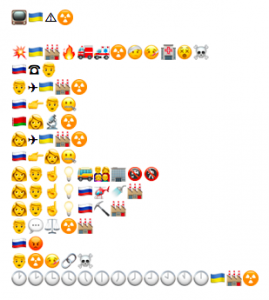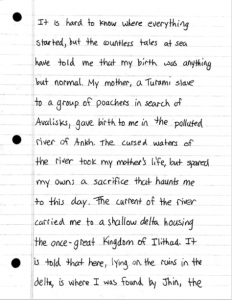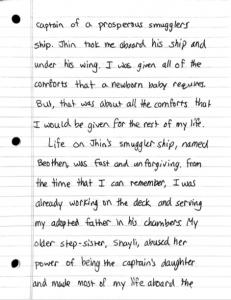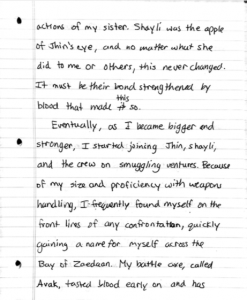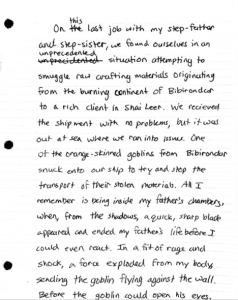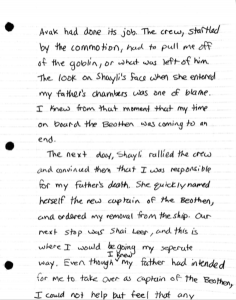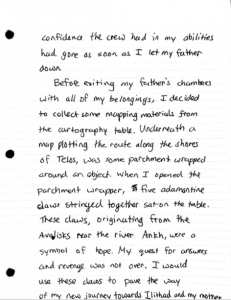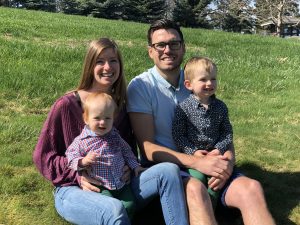My Voice to Text Story
9 years ago was the day I got married I can remember that day just like it was yesterday waking up early in the morning or barely sleeping at all and thinking about everything that was going to happen I remember going for Breakfast early in the morning with my groomsmen at the Eldorado and not even being able to focus on my breakfast because of the anticipation for everything that was gonna come for the rest of the day I remember how long of a drive is it to get to Midway which is a small town where we got married and Midway is located and the Drive Salt light for 5 or 6 hours and then we got to Midway I remember the weather and how the rain a little bit like a grey cloud Over the Hole start the wedding day I remember the weather being in a difficult thing to do think about and comprehend because I wasn’t able to talk to my wife about it because she was somewhere else getting ready for our wedding ceremony and so I was just trying to think about what she was thinking about and I had a feeling that you wasn’t going to be happy with the rainy weather for that day and the rain proved to be a problem in concept because in Midway we were getting married on a large farm and so everything was muddy and people were coming and dressing up for a wedding and they would have to be walking in mud to get to ceremony site and I just remember feeling anxious about all of these moving pieces that were going on that morning even though when I look back I know that those moments and the rain and the mud and all of that really did not take away from the whole experience in the moment it’s hard to have perspective all of the grievance and got ready in Alvin and we all got our suits on and are ready and made her hair was right and all that going to stop and then we headed to the ceremony site which is about a 10-minute walk from the cabin and I just remember seeing all the wildflowers that we planted these earlier in the spring popping up in the rain and and the excitement of all our hard work yet site ready when we got up to the site where the ceremony was happening we had to set up the benches and put the flowers up and the site ready for the final touches to get the site ready for the for the rest of the day and I just remember that was a good thing for me to have jobs to do because my mind busy and I started have less anxiety about the rain and the mud and all these other things that were going on and and I felt like I was contributing and getting ready for the day and then finally we started arriving we and the rain was still coming down and everybody had umbrellas but everyone seemed to be really happy and then as we started to get closer myself and the groomsman I wish were my brother we went to the mouth of the tunnel where we would my wife and I would be getting married and we stood there with our pastor and waited for the music star that would bring my wife down the aisle and course in typical wedding fashion we had to wait quite a while before my wife came to the aisle or what was in concept denial but was actually just a pathway and that led to the tunnel and isn’t that the way things happen you know the bride is always late right and and then I remember the music starts playing and it is some kind of miracle that the rain stopped right before the music started playing and then my my wife walk down the aisle and still no rain and we went to the ceremony and still know when train and ceremony ended and we were married and still no rain and it was amazing Sunny break in this rain storm that that came over our heads and and then as soon as everybody left at our ceremony was done and everyone was heading back to Kelowna for the reception and it started pouring rain again and my wife and I had to do our wedding photos in this pouring rain and again we are both worried about what this meant for our pictures you know weddings are once-in-a-lifetime things you know we both wanted the perfect wedding photos and in our minds of perfect wedding photos were taken in a Sunny Setting but what ended up happening is the rain and the created an amazing fact and everything was so great and so vibrant in the rain that our wedding photos are representative of all of this Vibrance that plants and grasses were all giving off and when we look back on them today 9 years later we both talked about how we would not have changed the weather for our wedding and how the rain was an important part of the whole story that ended up being our ceremony and reception on our wedding day and these are still things that people talk about to this day about how the the rain cleared rate for the Ravens at the right time for the ceremony and we have this beautiful sunny weather for the ceremony when everyone left to start pouring rain again and then by the time I got back to Kelowna the rain stopped and it was beautiful sunny weather for our our reception back in Kelowna and all of these things should add up to a meaningful memory and when I look back on it 9 years later it’s still so vibrant just like the plants and the grasses on that rainy day this memory is so vibrant in my head and it’s because of those circumstances in the rain and the worry and the amazing Sunshine that came out during the ceremony is because of those things that I remember everything so clearly to this day and I am thankful that we didn’t just have a sunny day because I believe that all of the small details from that amazing day are ingrained in my brain because the way things unfolded
Analysis
I find voice to text technology to be an interesting technological innovation, especially in terms of its use in an educational setting. I have used this technology in my classroom for students who have difficulties with written output, but I do not have a lot of experience with using the technology myself. I am not a voice to text texter on my cell phone, nor am I a voice to text writer on my computer. I really did not know what my conversational voice would look like in text form and was surprised when I read back my story. For the purpose of this assignment, I used Google Docs’ Voice Typing Tool to record my story.
In terms of conventions, I realise that there are a lot of conventional errors in my voice to text recording of my story when compared to written English. First off, there is no recorded punctuation in the whole story. I understand that I could have used the words “period” or “comma” to add punctuation into my text, but I wanted to make sure that the story was authentically conversational for the recording purposes. This made me wonder if there exists a voice to text technology that includes punctuation in a predictive manner?
There are also some conventional errors in terms of capitalization. Some words are capitalized that should not be such as “Sunny” and “Over”, and some words were properly capitalized, such as the names of places. Finally, the overall spelling of words was consistently correct. Even though the voice to text tool did record the wrong word in many instances (and thus changed the meaning), the actual spelling of each of the words is correct. Sometimes these wrongly recorded words changed the meaning of the sentence and thus altered the story. For example, the words “music star” were meant to be “music to start” which makes it seem like we had a “music star” at our ceremony waiting to play the music for my wife to come down the aisle. This technological misunderstanding has the power to change the meaning of the actual story.
Most of what is “wrong” in the text is conventional in nature. If we are looking at this story from a written English perspective, there are many punctuation, capitalization, and word replacement errors that affect this text in written form. But, if I were to read this story aloud using this text as a script, I think the meaning would not be lost and these conventional errors would be less impactful. Apart from the odd word replacement that changes the meaning of the sentence, the actual meaning and truthfulness of the story is fairly accurately portrayed in this text. I was surprised with the accuracy of the Voice to Text Tool because I sometimes found myself rambling quite quickly, and the tool definitely kept up with my speaking pace.
The common mistakes in the text are similar to what is stated above. Conventions, such as punctuation, capitalization, and word replacement definitely stand out as the most common mistakes that are fairly consistent throughout the text. In addition to this, the Voice to Text Tool also picked up a lot of “ands” in my story. When I went back and read this text, I realized how often I say the word “and” (83 times to be exact for this text). If I were assessing this piece of writing from an educator’s lens, I would definitely see the overuse of the word “and” as a mistake. I see both the conventional issues and the overuse of “and” as mistakes in this text because when I see text in a written English format, I automatically put on my editor lens to seek out these common areas of mistakes. This text in particular just does not look right with the lack of punctuation and paragraph formation.
If this story had been scripted, I feel I would have come across as a lot more eloquent and refined in my story telling ability. When I am writing text, I enjoy the process and time that is allowed for developing thoughts and ideas before getting them down. I feel like I would have included a lot more details, and there would have been a concise arrangement of all of the ideas so that it came across as a well worded and developed story. Also, if I had scripted this piece before using the Voice to Text Tool, there would have been less of a conversational sound to the text with the elimination of the conversational connecting words such as “and.” Overall, I believe scripting this story would have been a more comfortable process for myself, knowing that I had time to process and accurately record all of the details in the order that makes the most sense for the story.
Reflecting on this task and these questions definitely has reinforced my opinion and praise for oral storytellers. I have been very lucky to have seen some talented Indigenous oral storytellers through professional development opportunities and I have always thoroughly appreciated the art form. It is an amazing ability to be able to thoughtfully and accurately retell stories that portray meaning to the listener. Conversationally, it is too easy to get side tracked or to misrepresent the order of events when compared to scripted or written stories. Written storytellers have the luxury of time and editing, whereas oral storytellers have to be accurate with their words, meaning, and order in real time. In my opinion, this is a much larger responsibility to carry with far more room for error.

